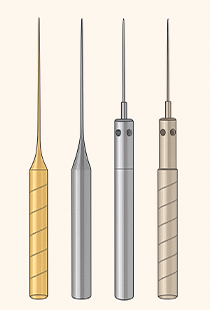As an aesthetician practicing electrology, you won’t just memorize theories—you’ll live them every day with every client who walks through your door.
- You’ll carry the legacy of a profession that has evolved over decades.
- You’ll see the galvanic process in action as you use chemical reactions to permanently destroy hair follicles.
- You’ll apply your understanding of iontophoresis, anaphoresis, and cataphoresis when performing skin treatments that use electrical currents.
- You’ll use thermolysis to target follicles with high-frequency current, appreciating how quickly it works and how precise it can be in the right hands.
- You’ll combine science and technique with the Blend method, using both electrical current and chemical reaction to achieve results on even the most stubborn hairs. And, understand why it works and when to reach for it as your method of choice.
- You’ll select the right probe for every client, taking into account factors like metal type, tip size, and shape. You’ll notice how a slight difference in probe choice can change the outcome of a treatment, and your attention to these details will set you apart as a skilled professional.
Supporting Textbooks
To deepen your understanding and reinforce key learning objectives, we highly recommend these textbooks as valuable resources. They provide additional insights that complement this course and many others. The reading assignments are part of the total course hours identified in the description. Exploring topics from multiple sources enhances critical thinking, strengthens problem-solving skills, and serves as a long-term career reference, helping you stay informed and confident in your field.
- Morris G, Brown J. Practical Electrolysis: The Official Guide to Electro-Epilation. Cengage Learning; 2012.
- Milady. Milady Standard Foundations.; 2019
- Godfrey S. Principles and Practice of Electrical Epilation. Routledge; 2011.
- Debrah Jones. Electrolysis The Business.; 2019




